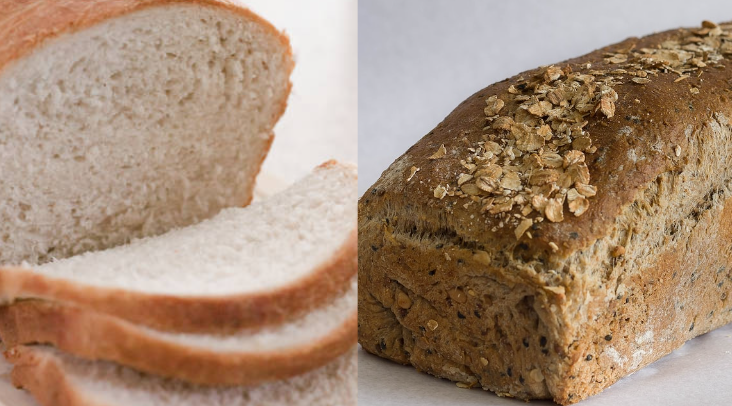White Bread Vs. Whole Wheat Bread: Which Bread Wins?

What To Know
- Whole wheat bread, a nutritional powerhouse, boasts a symphony of vitamins, minerals, and antioxidants.
- Whole wheat bread, possessing a lower glycemic index compared to white bread, ensures a steadier release of sugar into the bloodstream.
- Can I Substitute Whole Wheat Bread in Recipes Calling for White Bread.
In the realm of nutrition, the age-old debate of white bread vs whole wheat bread continues to captivate health-conscious consumers. While both options stem from the same source, wheat, the processing methods and nutritional profiles diverge, creating a spectrum of health implications. Join us as we delve into the intricacies of these bread varieties, uncovering their unique characteristics and guiding you toward informed choices.
Whole Wheat Bread: A Symphony of Nutrients
Whole wheat bread, a wholesome creation, retains the entirety of the wheat grain – the bran, germ, and endosperm. This trio of components harmonizes essential nutrients, including fiber, vitamins, minerals, and antioxidants.
White Bread: Stripped of Nature’s Goodness
White bread, a refined product, undergoes a process of stripping, removing the bran and germ, leaving behind the endosperm. This refined endosperm, primarily composed of starch, lacks the nutritional diversity of its whole wheat counterpart.
Health Benefits of Whole Wheat Bread
1. Dietary Fiber: A Gut-Friendly Feast
Whole wheat bread, brimming with dietary fiber, promotes digestive well-being, satiety, and blood sugar control. This dietary powerhouse fosters a healthy gut microbiome, fending off digestive ailments and promoting overall health.
2. Nutrient Density: A Symphony of Goodness
Whole wheat bread, a nutritional powerhouse, boasts a symphony of vitamins, minerals, and antioxidants. This nutrient-rich composition supports a robust immune system, promotes cellular health, and shields against chronic diseases.
3. Glycemic Index: A Slower Sugar Release
Whole wheat bread, possessing a lower glycemic index compared to white bread, ensures a steadier release of sugar into the bloodstream. This sustained energy supply prevents blood sugar spikes and crashes, promoting stable energy levels and satiety.
Drawbacks of White Bread
1. Nutritional Deficiency: A Bleak Landscape
White bread, stripped of the bran and germ, suffers from nutritional deficiencies. Its limited fiber, vitamins, minerals, and antioxidants fail to provide the same health benefits as whole wheat bread.
2. Refined Carbohydrates: A Fast-Paced Energy Rush
White bread, composed of refined carbohydrates, rapidly elevates blood sugar levels, leading to energy spikes and crashes. This rollercoaster ride of energy fluctuations can contribute to fatigue, irritability, and difficulty in concentration.
3. Potential Health Concerns: A Shadow of Uncertainty
White bread, due to its refined nature and limited nutritional value, has been linked to various health concerns, including weight gain, type 2 diabetes, and heart disease. While more research is needed, opting for whole wheat bread remains the safer choice.
When Moderation Prevails: A Balanced Approach
While whole wheat bread emerges as the superior choice, moderation remains key. Incorporating both whole wheat and white bread into your diet in moderation allows for variety and flexibility without compromising your health goals.
Choosing Wisely: Navigating the Bread Aisle
When faced with a multitude of bread options, scrutinize the ingredient list and nutritional information. Select whole wheat bread that boasts 100% whole wheat flour as its primary ingredient. Avoid white bread labeled as “enriched” or “bleached,” indicating excessive processing.
Creative Culinary Adventures with Whole Wheat Bread
Whole wheat bread, a versatile culinary canvas, invites creativity in the kitchen. From classic sandwiches to innovative toasts and delectable French toasts, whole wheat bread elevates each culinary creation with its wholesome goodness.
Final Note: Empowering Informed Bread Consumption
The choice between white bread vs whole wheat bread boils down to prioritizing health and nutrition. Whole wheat bread, with its wealth of nutrients and health benefits, stands as the clear winner. Embrace whole wheat bread as your bread of choice, enjoying its nutritional prowess and delectable taste without compromising your well-being.
Frequently Asked Questions: Unraveling Bread Queries
1. Can I Substitute Whole Wheat Bread in Recipes Calling for White Bread?
Yes, you can seamlessly substitute whole wheat bread in most recipes that traditionally call for white bread. Simply replace white bread with whole wheat bread in equal proportions, maintaining the recipe’s integrity and flavor profile.
2. Is Whole Wheat Bread Suitable for Weight Loss?
Whole wheat bread, with its fiber content and sustained energy supply, can aid in weight loss efforts. Fiber promotes satiety, reducing overeating, while the slower release of sugar helps regulate appetite and prevent cravings.
3. How Can I Make Whole Wheat Bread More Appealing to Children?
To entice children to embrace whole wheat bread, consider these strategies:
- Offer a Variety of Whole Wheat Bread Options: Explore different brands, flavors, and textures of whole wheat bread until you find one that suits your child’s taste preferences.
- Pair Whole Wheat Bread with Their Favorite Toppings: Elevate the appeal of whole wheat bread by allowing your child to customize their sandwiches or toasts with their favorite toppings, such as peanut butter, jelly, or sliced bananas.
- Create Fun Shapes and Designs: Engage your child’s imagination by cutting whole wheat bread into fun shapes using cookie cutters or creating playful designs with toppings.